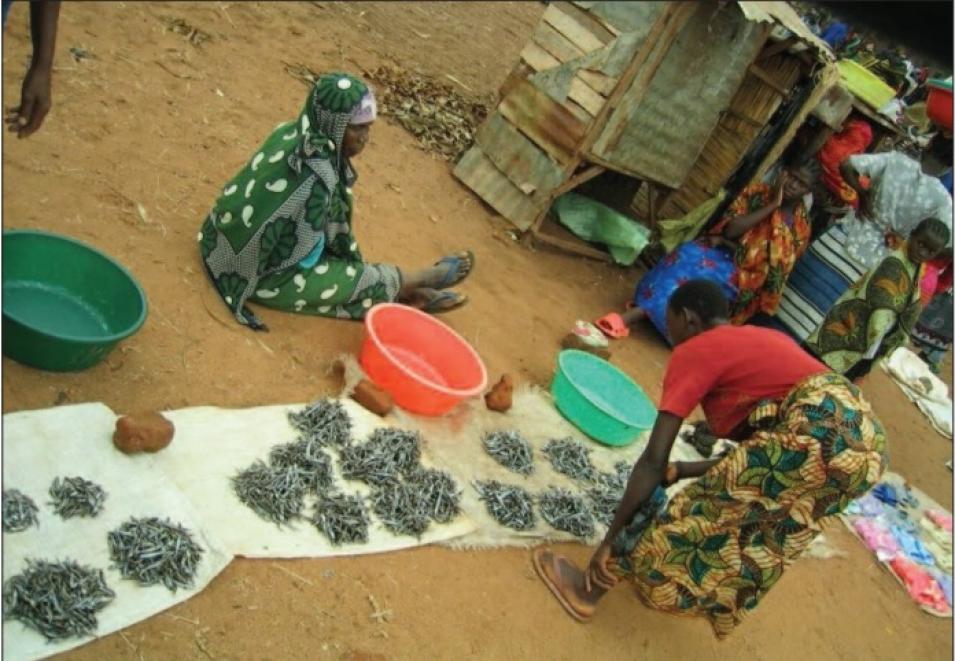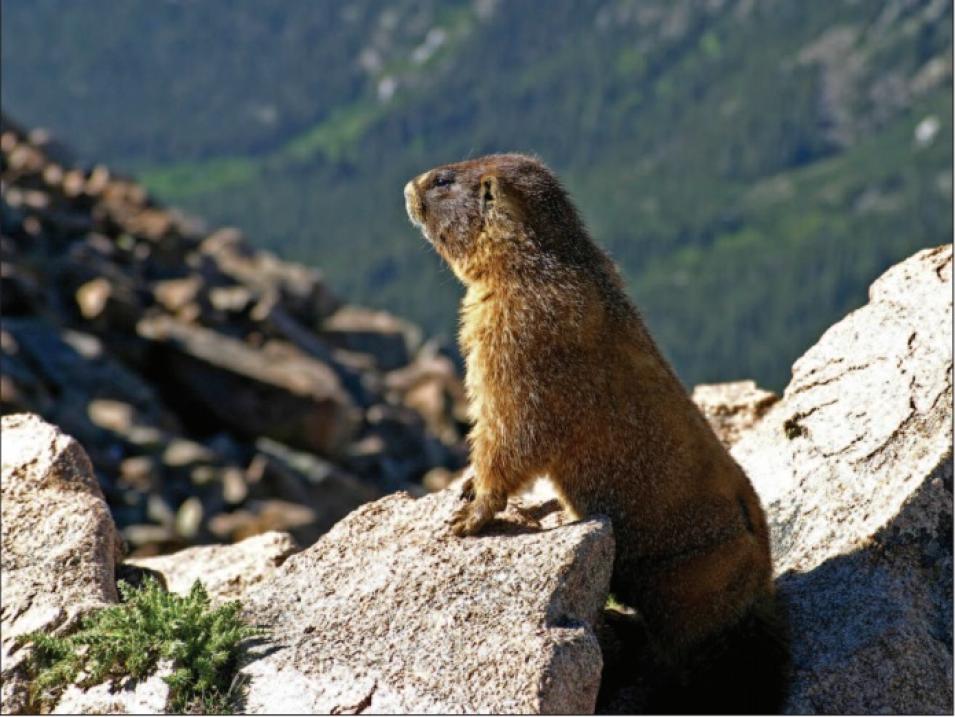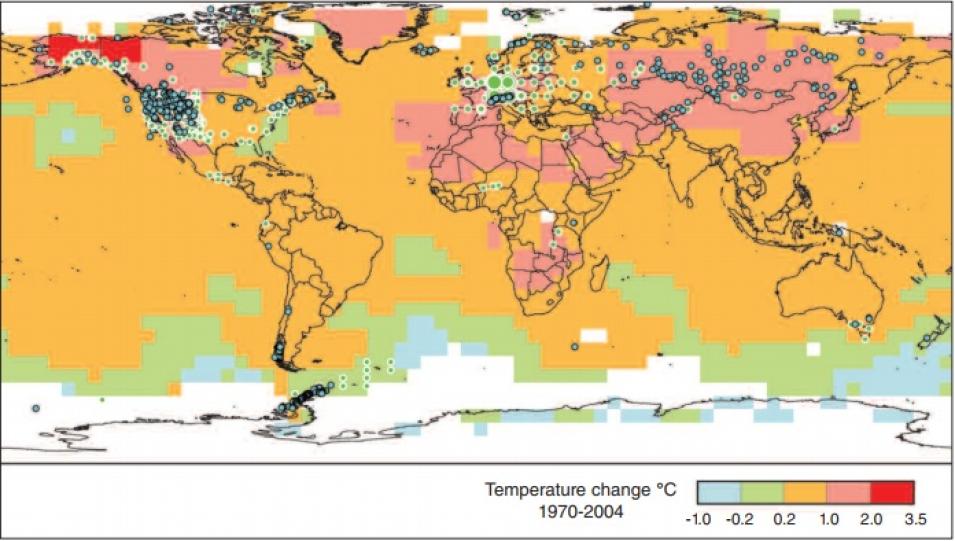After careful examination of each study in the database, Rosenzweig and her group were surprised to find how many impacts were closely linked to climate change. Rosenzweig said, “By far, out of the hundreds of cases, only a handful of the impacts might actually be caused by something else.”
Warming hits home
By themselves, scattered changes in bird migrations or water temperature may not seem alarming. “What the database shows is that ecosystems are responding to climate change. In essence they’re doing what they’re supposed to be doing; they are re-acclimating. Whether that’s good or bad is a human judgment, and it has to do with the values that we place on our natural world,” Rosenzweig said. “However, we have seen widespread changes with just the 0.7 degrees Celsius [1.3 degrees Fahrenheit] of warming, and this is just a fraction of what is expected. Eventually, the rate of change will outstrip the species’ phenotypic and genetic adaptive capacity, and then some serious problems might arise.” Also, since humans rely on the natural world for food, water, and resources, changing ecosystems can cause serious problems for human health and economies.
Rosenzweig and O’Reilly point out that the impact of climate change may prove to be especially damaging in the regions with the scarcest data—primarily tropical and subtropical areas in Latin America, Africa, and Asia, where fewer scientists have studied the effects of climate change. O’Reilly said, “Some of the ecosystems humans depend on most heavily are the ones that we have the fewest and shortest data sets for.” In the region surrounding Lake Tanganyika, for example, the combination of decreasing fish catches and increasing human population means that hunger and malnutrition may not be far behind. O’Reilly said, “In Africa, around this lake, it’s going to lead to a huge problem which hasn’t really been realized or planned for.”
Researchers and policy makers all over the world are now working to understand how climate change will affect people where they live. How will climate change impact water supplies for growing populations? How will cities respond to sea level rise? How will farmers deal with environmental changes that affect their crops? The United States Global Climate Change Research Program recently reported on observed and potential regional impacts of climate change within the United States. The report emphasized that many changes have already occurred, and that climate change will have some impacts, whether or not people reduce carbon emissions in the future. O’Reilly said, “We’re at the point right now in human society where we need to be thinking about adaptation to climate change.”
References
O’Reilly, et al. 2003. Climate change decreases aquatic ecosystem productivity of Lake Tanganyika, Africa. Nature 424: 766−768.
Rosenzweig, C. 2008. Warming climate is changing life on global scale. http://www.giss.nasa.gov/research/briefs/rosenzweig_02.
Parry, M., O. Canziani, J. Palutikof, P. van der Linden, and C. Hanson, eds. 2007. Climate Change 2007: Impacts, adaptation and vulnerability . Contribution of Working Group II to the Fourth Assessment Report of the Intergovernmental Panel on Climate Change. Cambridge, UK: Cambridge University Press.
Rosenzweig, C., et al. 2008. Attributing physical and biological impacts to anthropogenic climate change. Nature 453: 353−357.
United States Global Climate Change Research Program. 2009. Global climate change in the United States. http://www.globalchange.gov/publications/reports/scientific-assessments/us-impacts.
For more information
NASA Socioeconomic Data and Applications Center (SEDAC)
IPCC Fourth Assessment Report (AR4) Observed Climate Change Impacts Database
United States Global Change Research Program
| About the data |
| Data set |
IPCC Fourth Assessment Report (AR4) Observed Climate Change Impacts Database |
| Parameter |
Physical and biological impacts of climate change |
| DAAC |
NASA Socioeconomic Data and Applications Center (SEDAC) |


